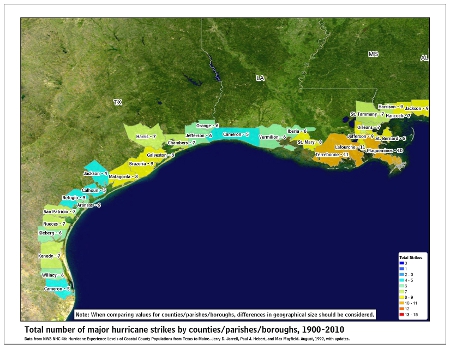The time to prepare for a hurricane is before the season begins, when you have the time and are not under pressure. If you wait until a hurricane is on your doorstep, the odds are that you will be under duress and will make the wrong decisions. Take the time now to write down your hurricane plan. Know where you will ride out the storm and get your supplies now. You don’t want to be standing in long lines when a hurricane warning is issued. Those supplies that you need will probably be sold out by the time you reach the front of the line. Being prepared, before a hurricane threatens, makes you resilient to the hurricane impacts of wind and water. It will mean the difference between your being a hurricane victim and a hurricane survivor.
Thanks to NOAA for the above graphic!
Here are templates that you can download, print, and fill out to help you in making a plan:
- For parents (PDF)
- For kids (PDF)
- For transit commuters (PDF)
- For your wallet (PDF)
- Steps to make a plan (PDF)
- Tips on emergency alerts and warnings (PDF)
Here are a few easy steps to start your emergency communication plan:
- Understand how to receive emergency alerts and warnings. Make sure all household members are able to get alerts about an emergency from local officials. Check with your local emergency management agency to see what is available in your area, and learn more about alerts by visiting: www.ready.gov/alerts.
- Discuss family/household plans for disasters that may affect your area and plan where to go. Plan together in advance so that everyone in the household understands where to go during a different type of disaster like a hurricane, tornado, or wildfire.
- Collect information. Create a paper copy of the contact information for your family that includes:
- phone (work, cell, office)
- social media
- medical facilities, doctors, service providers
- school
- Identify information and pick an emergency meeting place. Things to consider:
- Decide on safe, familiar places where your family can go for protection or to reunite.
- Make sure these locations are accessible for household members with disabilities or access and functional needs.
- If you have pets or service animals, think about animal-friendly locations.
Examples of meeting places:
- In your neighborhood: A mailbox at the end of the driveway, or a neighbor’s house.
- Outside of your neighborhood: library, community center, place of worship, or family friend’s home.
- Outside of your town or city: home of a relative or family friend. Make sure everyone knows the address of the meeting place and discuss ways you would get there.
- Share information. Make sure everyone carries a copy in his or her backpack, purse, or wallet. You should also post a copy in a central location in your home, such as your refrigerator or family bulletin board.
- Practice your plan. Have regular household meetings to review your emergency plans, communication plans and meeting place after a disaster, and then practice, just like you would a fire drill.
More information to complete your written hurricane plan can be found at Ready.gov/MakeAPlan!

 DONATE
DONATE![[Map of 1950-2017 CONUS Hurricane Strikes]](http://www.nhc.noaa.gov/climo/images/conus_strikes_sm.jpg)










